

*(S Rating) Scarcity Rating (includes
scarcity, relevance and content) - with 10 being the most desirable and 1
easiest to acquire. Those highlighted in the deeper shades of red are highly
sought after works.

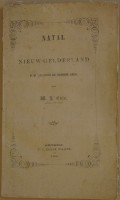
 This extremley rare forty page booklet was aimed at encouraging Dutch settlers to a sugar cane farm in Natal in the 1860s after the boers (Dutch) were defeated by the British in this region.
This extremley rare forty page booklet was aimed at encouraging Dutch settlers to a sugar cane farm in Natal in the 1860s after the boers (Dutch) were defeated by the British in this region.
William Karel Ente, who arrived in Natal on the Prins Frederick der Nederlanden in 1857, published this booklet (written in Dutch) describing New Gelderland in glowing terms. He mentions its crystal clear rivers, rich soil and its suitability for the cultivation of sugar cane.
You can read more about Nieuw-Gelderland at this link
This extremely rare original booklet, in very good condition, is held by the Balson Holdings Family Trust.
Critical comment on this work:Fascinating publication aimed at attracting Dutch settlers to Natal after the boers were defeated by the British in Natal |
 Excellent and
informative book which represents Theale's first attempt at covering the
early history and geography of South Africa.
Excellent and
informative book which represents Theale's first attempt at covering the
early history and geography of South Africa.
The chapters include descriptive chapters on the lives and culture of the Hottentots and Bushmen as well as the arrival of van Riebeeck in the Cape.
It also looks at the granting of the first tracts of land by the Dutch East India Company.
The Balson Holdings Family Trust hold two
of these original title deeds.
This rare original complete book, in good condition, is held by the Balson Holdings Family Trust.
Critical comment on this work:An invaluable and classical resource used as a major source of reference by historians over the last 100 years. |
Set of twelve key Cape of Good Hope yearly Blue Books over the period 1876-1906
A very rare and valuable collection of Blue Books - not available for
sale on the Internet. The books contain letters and reports from Magistrates
and committees covering all native areas including east Griqualand.
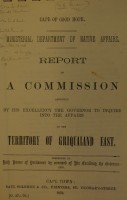
Blue-book G37 of 76, 1876
 Bound photocopy
taken from the parliamentary Blue Book in Cape Town by the author in 1980.
Bound photocopy
taken from the parliamentary Blue Book in Cape Town by the author in 1980.
The fascinating 280 page report looks at the conflict that broke out with the Basuto. The report carries extensive correspondence from Blythe and Nehemiah.
What is interesting are the scans below with traders complaining about the monopoly that the firm Strachan and Co enjoyed because of the position of Charles Brisley (a partner in the company) as Secretary of the Griqua Raad.
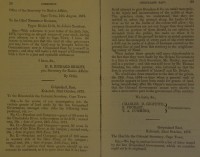 |  | 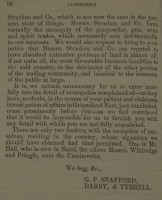 | 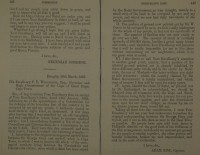 |
| Strachan & Co in the spotlight | Strachan & Co in the spotlight | page two of letter | Adam Kok claims that the land was given to the Griqua |
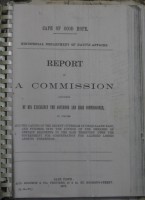
Blue-book G58 of 79, 1879
 Bound photocopy
taken from the parliamentary Blue Book in Cape Town by the author in 1980.
Bound photocopy
taken from the parliamentary Blue Book in Cape Town by the author in 1980.
The fascinating 224 page report covers the causes of the outbreak by the Griqua in East Griqualand following the unwanted arrival of Captain Blyth and his mounted soldiers. This followed the annexation of the lands by the Governor of the Cape - an act which was unwarranted and unacceptable to the peace loving Griqua people.
Comes with a map of the region.
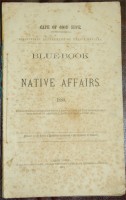 Blue-book on Native Affairs, 1880
Blue-book on Native Affairs, 1880
 Cape of Good Hope.
Ministerial Department of Native Affairs. Compiled in compliance with a
resolution of the Honourable the House of Assembly, dated the 10th June,
1873, [G. 13-'80]. Cape Town, Saul Solomon & Co., 1880. First edition.
Folio. Consists mainly of reports from magistrates, etc. concerning the situation
in tribal areas, particularly in British Basutoland, Griqualand
East, Pondoland, Tembuland & Transkei. Pp. 195, tables. Lacks
the blue wrappers, heavy foxing, corners creased.
Cape of Good Hope.
Ministerial Department of Native Affairs. Compiled in compliance with a
resolution of the Honourable the House of Assembly, dated the 10th June,
1873, [G. 13-'80]. Cape Town, Saul Solomon & Co., 1880. First edition.
Folio. Consists mainly of reports from magistrates, etc. concerning the situation
in tribal areas, particularly in British Basutoland, Griqualand
East, Pondoland, Tembuland & Transkei. Pp. 195, tables. Lacks
the blue wrappers, heavy foxing, corners creased.
In the scans below the power of Donald Strachan is demonstrated as 2,500 natives formed in behind him to form his makeshift Abalandalosi army. "The rapid movement of men to the fronteir (by Strachan) staggered the Pondos".
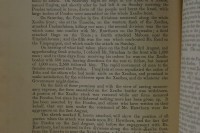 | 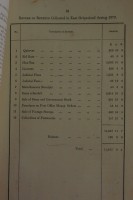 | 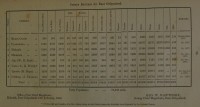 | 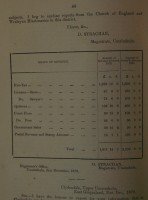 |
| Strachan's private army - The Abalandalosi | E Griqualand tax revenues | Population census | Magistrate Donald Strachan |
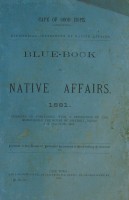
Blue-book on Native Affairs, 1881
 Cape of Good Hope.
Ministerial Department of Native Affairs. Compiled in compliance with a
resolution of the Honourable the House of Assembly, dated the 10th June,
1881, [G. 20-'81]. Cape Town, Saul Solomon & Co., 1881. First edition.
Folio. Blue printer wraps. Consists mainly of reports from magistrates, etc.
concerning the situation in tribal areas, particularly in British Basutoland,
Griqualand West, Griqualand East, Pondoland, Tembuland &
Transkei. Pp. (iii),142, tables. Front wrapper detached (but present), corners
creased, foxing.
Cape of Good Hope.
Ministerial Department of Native Affairs. Compiled in compliance with a
resolution of the Honourable the House of Assembly, dated the 10th June,
1881, [G. 20-'81]. Cape Town, Saul Solomon & Co., 1881. First edition.
Folio. Blue printer wraps. Consists mainly of reports from magistrates, etc.
concerning the situation in tribal areas, particularly in British Basutoland,
Griqualand West, Griqualand East, Pondoland, Tembuland &
Transkei. Pp. (iii),142, tables. Front wrapper detached (but present), corners
creased, foxing.

Blue-book on Affairs of South Africa, June 1881
 Presented to both Houses of Parliament (UK) by demand of Her Majesty (Queen Victoria). First edition.
Presented to both Houses of Parliament (UK) by demand of Her Majesty (Queen Victoria). First edition.
Folio. Blue printer wraps. Consists mainly of reports, letters and maps from various noteable members of the army. The papers cover the British loss at Majuba and have several related maps (seen below).
Pp. (iiiv),193, tables.
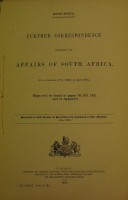 | 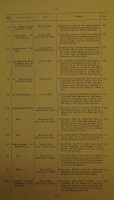 | 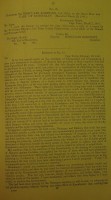 | 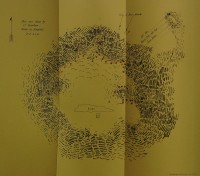 | 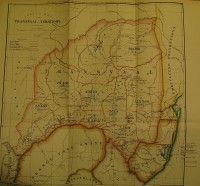 |
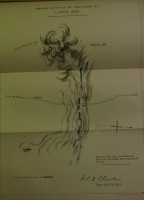 | 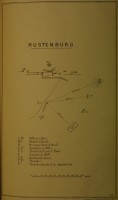 | 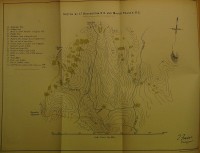 | 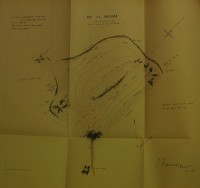 | 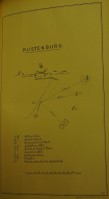 |
 Blue-book on Native Affairs, 1883 (ex State Library Pretoria)
Blue-book on Native Affairs, 1883 (ex State Library Pretoria)
 Cape of Good Hope.
Ministerial Department of Native Affairs. Compiled in compliance with a
resolution of the Honourable the House of Assembly, dated the 10th June,
1873, [G. 8-'83]. Cape Town, W A Richards and Sons, Government Printers, Castle St, Cape Town, 1883. First edition.
Folio.
Cape of Good Hope.
Ministerial Department of Native Affairs. Compiled in compliance with a
resolution of the Honourable the House of Assembly, dated the 10th June,
1873, [G. 8-'83]. Cape Town, W A Richards and Sons, Government Printers, Castle St, Cape Town, 1883. First edition.
Folio.
What is interesting is the natives love of Capt Hook's fairness and open hatred for his predecessor Chief Magistrate Matthew Blythe - expressed in their dialogue recorded in the pages of this book. Hook's book "With Sword and Statute" can be seen at this link.
This is the original rebound book once housed by the State Library in Pretoria. One of the tragic outcomes of the new post-1994 democracy in South Africa is the manner in which state archives are not only being plundered, but sold off as if past history had no value.
This book is a classic case in point. Several images from this defining book are carried below.
Consists mainly of reports from magistrates, etc. concerning the situation in tribal areas, particularly in British Basutoland, Griqualand West, Griqualand East, Pondoland, Tembuland & Transkei. Pp. (iii),143, tables. Front wrapper missing and replaced by State Library hard covers.
One of the tables below being a census on workers in the diamond mines of Kimberley and Du Toit's Pan reveal that just eleven Griqua out of a workforce of over 22,000 natives worked on the mines.
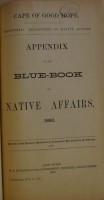 | 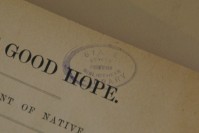 | 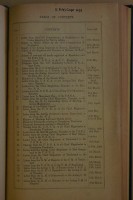 | 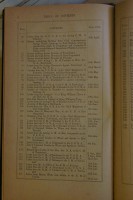 |
| The frontispiece | State Library stamp | Contents | Contents |
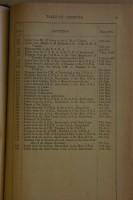 | 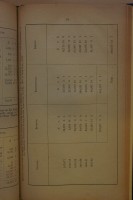 | 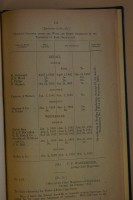 | 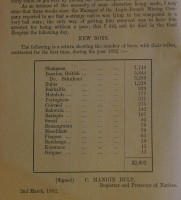 |
| Contents | Cost of administering native areas | Licensed liquor stores (E Griqualand) | Natives working on diamond mines |
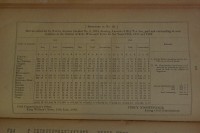 | |||
| Revenues from the hated hut tax |
Blue-book on Affairs of Pondoland, August 1885 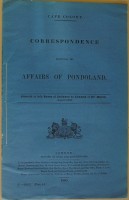
 Very interesting and rare original smaller (25 page) Blue Book in excellent condition presented to both Houses of Parliament by order of Her Majesty.
Very interesting and rare original smaller (25 page) Blue Book in excellent condition presented to both Houses of Parliament by order of Her Majesty.
The correspondence puts to rest the the suggestion that the German community in Pondoland were trying to set up a German state and once again reveal the curse of Imperialism on the lives of the indigenous African tribes who resided in this region.
See the scans below.
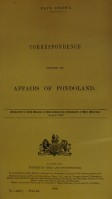 | 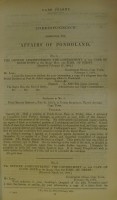 | 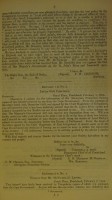 |
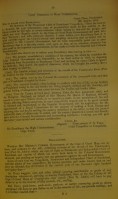 | 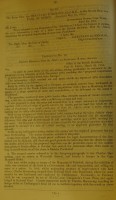 | 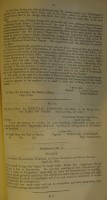 |
Blue-book on Native Affairs, 1887
Cape of Good Hope. Ministerial Department of Native Affairs. Compiled in compliance with a resolution of the Honourable the House of Assembly, dated the 10th June, 1873, [G. 12-'87]. Cape Town, W.A. Richards & Sons, 1887. First edition. Folio. Blue printer wraps. Consists mainly of reports from magistrates, etc. concerning the situation in tribal areas, particularly in eastern Cape, Griqualand East, Pondoland, Tembuland & Transkei. This volume contains a coloured folding map of the native districts of the eastern Cape/Transkei/Griqualand East. Pp. vii,104, folding map (image right). Covers soiled, text pages browned, some corners creased, map torn (but complete).
In this report there is an interesting commentary on a mini gold rush for gold at Ongeluks Nek. This was a debacle and caused quite a lot of consternation among those who trekked into this remote part to try to make their fortune.
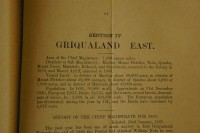 | 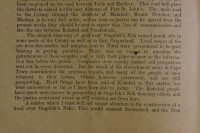 | 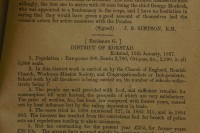 | 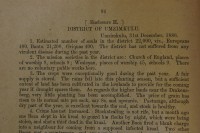 |
| Gold at Ongeluks Nek | |||
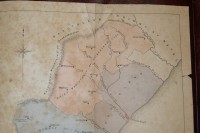 | |||
| Folding map in book |
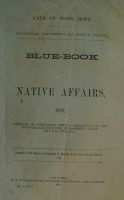
Blue-book on Native Affairs, 1888
 Cape of Good Hope.
Ministerial Department of Native Affairs. Compiled in compliance with a
resolution of the Honourable the House of Assembly, dated the 10th June,
1873, [G. 6-'88]. Cape Town, W.A. Richards & Sons, 1888. First edition.
Folio. Green printer wrap. Consists mainly of reports from magistrates, etc.
concerning the situation in tribal areas, particularly in eastern Cape,
Griqualand East, Pondoland, Tembuland & Transkei. Pp. (ii),87,
tables. Upper wrapper frayed, lower wrapper missing, paper browned &
a little brittle, corners folded.
Cape of Good Hope.
Ministerial Department of Native Affairs. Compiled in compliance with a
resolution of the Honourable the House of Assembly, dated the 10th June,
1873, [G. 6-'88]. Cape Town, W.A. Richards & Sons, 1888. First edition.
Folio. Green printer wrap. Consists mainly of reports from magistrates, etc.
concerning the situation in tribal areas, particularly in eastern Cape,
Griqualand East, Pondoland, Tembuland & Transkei. Pp. (ii),87,
tables. Upper wrapper frayed, lower wrapper missing, paper browned &
a little brittle, corners folded.
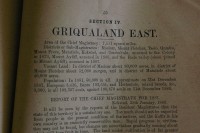 | 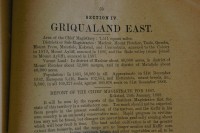 | 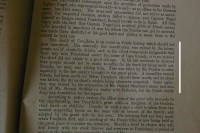 | 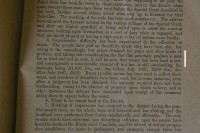 |
| Strachan blamed for Chief's death | Shortage of cash in the region | ||
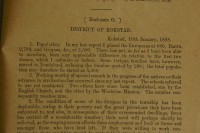 | 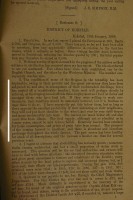 | 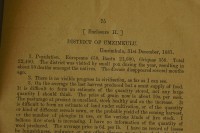 | |
| The desperate state of the Griqua |
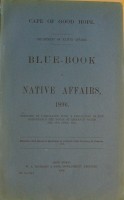 Blue-book on Native Affairs, 1896 (ex State Library Pretoria)
Blue-book on Native Affairs, 1896 (ex State Library Pretoria)
 Cape of Good Hope.
Ministerial Department of Native Affairs. Compiled in compliance with a
resolution of the Honourable the House of Assembly, dated the 10th June,
1873, [G. 5-'96]. Cape Town, W.A. Richards & Sons, 1896. First edition.
Folio. Blue printer wrap. Consists mainly of reports from magistrates, etc.
concerning the situation in tribal areas, particularly in eastern Cape,
Griqualand East, Pondoland, Tembuland & Transkei. Pp. (ii),157,
tables. Wrappers in fair condition, paper browned &
a little brittle, corners folded.
Cape of Good Hope.
Ministerial Department of Native Affairs. Compiled in compliance with a
resolution of the Honourable the House of Assembly, dated the 10th June,
1873, [G. 5-'96]. Cape Town, W.A. Richards & Sons, 1896. First edition.
Folio. Blue printer wrap. Consists mainly of reports from magistrates, etc.
concerning the situation in tribal areas, particularly in eastern Cape,
Griqualand East, Pondoland, Tembuland & Transkei. Pp. (ii),157,
tables. Wrappers in fair condition, paper browned &
a little brittle, corners folded.
What is disturbing, as can be seen from the reports scanned below, the British Government had removed the reference to the Griqua from their population census and simply referred to this group as "Hottentots and mixed breeds" - destroying their rich cultural identity. This was done deliberately by the despised Chief Magistrate Matthew Blythe who led the British force that annexed East Griqualand in 1879.
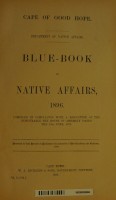 | 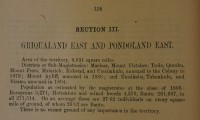 | 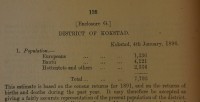 | 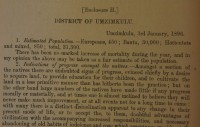 |
| The frontispiece | 4,576 Griqua in East Griqualand | 2,336 Griqua in Kokstad | 850 Griqua in Umzimkulu |
 | |||
| Liquor consumption in E Griqualand |
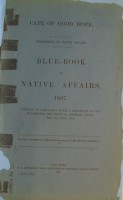 Blue-book on Native Affairs, 1897 (ex State Library Pretoria)
Blue-book on Native Affairs, 1897 (ex State Library Pretoria)
 Cape of Good Hope.
Ministerial Department of Native Affairs. Compiled in compliance with a
resolution of the Honourable the House of Assembly, dated the 10th June,
1873, [G. 19-'97]. Cape Town, W.A. Richards & Sons, 1897. First edition.
Folio. Blue printer wrap. Consists mainly of reports from magistrates, etc.
concerning the situation in tribal areas, particularly in eastern Cape,
Griqualand East, Pondoland, Tembuland & Transkei. Pp. (ii),164,
tables. Wrappers in fair condition, paper browned &
a little brittle, corners folded.
Cape of Good Hope.
Ministerial Department of Native Affairs. Compiled in compliance with a
resolution of the Honourable the House of Assembly, dated the 10th June,
1873, [G. 19-'97]. Cape Town, W.A. Richards & Sons, 1897. First edition.
Folio. Blue printer wrap. Consists mainly of reports from magistrates, etc.
concerning the situation in tribal areas, particularly in eastern Cape,
Griqualand East, Pondoland, Tembuland & Transkei. Pp. (ii),164,
tables. Wrappers in fair condition, paper browned &
a little brittle, corners folded.
Few interesting tables recorded below when compares to the 1896 Blue Book above.
For example the "Hottentot and mixed breeds" (read Griqua) population had dropped by about 200 to just 4,387.
What is also disturbing is the rapid increase in liquor consumption in East Griqualand - a factor which destroyed the very fabric of the Griqua culture for many generations. Under Adam Kok III in the 1870s liquor had been banned; their favourite drop, brandy, recorded an official consumption of about 15,000 gallons in both 1896 (see above) and 1897 (see below).
The devil in the detail is exposed debunking folklore which would have you believe that many tens of thousands of native workers travelled to the gold mines and on their return aleviated the shortage of coin in the remote area of East Griqualand when they came home.
This falsehood is exposed in the official Blue Book table below which shows that in 1897 under 10,000 natives travelled across South Africa to seek out work with just half of this number going to the goldfields.
In fact the table states that "The labour supply is very limited; the local demand being considerable".
It was at this time that the Strachan and Co token coins were the bona fide currency of this region.
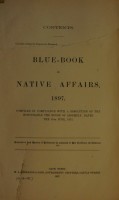 | 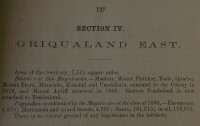 | 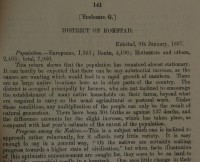 | 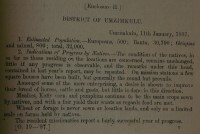 |
| The frontispiece | 4,387 Griqua in East Griqualand | 2,403 Griqua in Kokstad | 800 Griqua in Umzimkulu |
 |  | ||
| Liquor consumption in East Griqualand |
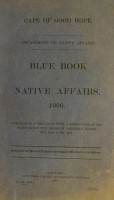
Blue book on Native Affairs, 1906
 Cape of Good Hope.
Department of Native Affairs. Compiled in compliance with a resolution of
the Honourable the House of Assembly, dated the 10th June, 1873, [G. 36-1907].
Cape Town, Cape Times Ltd., 1907. First edition. Folio. Blue printer wraps.
Consists mainly of reports of magistrates, commissioners, etc. for British
Bechuanaland, northern Cape, eastern Cape, Transkei. Pp. v,89,
tables. Back cover stained, some stains & foxing in text. Good.
Cape of Good Hope.
Department of Native Affairs. Compiled in compliance with a resolution of
the Honourable the House of Assembly, dated the 10th June, 1873, [G. 36-1907].
Cape Town, Cape Times Ltd., 1907. First edition. Folio. Blue printer wraps.
Consists mainly of reports of magistrates, commissioners, etc. for British
Bechuanaland, northern Cape, eastern Cape, Transkei. Pp. v,89,
tables. Back cover stained, some stains & foxing in text. Good.
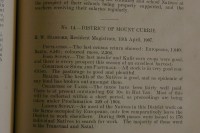
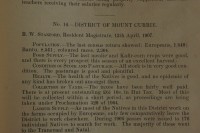
These Blue Books have been bought by the Balson Holdings Family Trust over many years.
Critical comment on these papers:These papers allow you to see into the colonial minds of the white Government and the manner in which they suppressed and abused the good faith of the indigenous peoples of South Africa. |
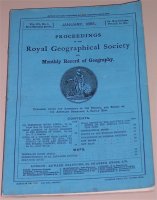
 A substantial paper
in the Royal Geographic Society bulletin written on the urge to follow the
lead indicated by Livingstone in his first journey of exploration and further
explore the temperate region of South Africa.
A substantial paper
in the Royal Geographic Society bulletin written on the urge to follow the
lead indicated by Livingstone in his first journey of exploration and further
explore the temperate region of South Africa.
Sir Henry Bartle Edward Frere, 1815-84, was a British colonial administrator. He served from 1850-59, as chief commissioner of Sind, distinguishing himself during the Indian Mutiny, and was governor of Bombay from 1862-67. In 1872 he negotiated a treaty with the sultan of Zanzibar for the suppression of the slave trade. Appointed governor of Cape Colony and high commissioner of British South Africa, Frere had to cope with Boer discontent in the newly annexed Transvaal, the conflict between the Griquas and the boers and with Zulu unrest in Natal. Intent on breaking the military power of the Zulus, he precipitated in 1878 the Zulu War. His action was disapproved in London, and although he was popular in the Cape he was recalled to England in 1880. Just before his recall he signed this document giving title of land to a Charles Brisley, a partner in the firm Strachan and Company.
This rare original copy of the January 1881 edition of the Royal Geographic Society's monthly record is held by the Balson Holdings Family Trust.
Critical comment on this work:A fascinating account of South Africa at this time - includes estimated population figures of native tribes and the geographic area that they inhabited. Frere fell out with powerful figures in Britain and was recalled and "fired". The Balson Holdings Family Trust holds a number of extremely rare Royal Geographic Society papers including: Sir Bartle Frere's obituary, 1884; a paper on a trip "from Cape Town to Nyassa" (with maps) 1886 and Ptolemy's topography of Eastern Equatorial Africa, 1891 with original maps. |
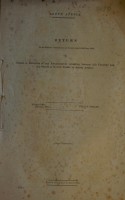
 Document in transit
as of June 2007
Document in transit
as of June 2007
Return to an address of the House of Lords, dated 15th June 1883, for copies of extracts of any engagements subsisting between this country and any states of native tribes in South Africa. [42]. London, 1884. Folio. Disbound. Reproduces all treaties entered into by the British government and native peoples in South Africa, beginning with a treaties signed with the Griquas & Zulus in 1834 & 1835 and concluding with the terms of Cetywayo's restoration in 1882. Pp. V,125. Disbound, lacking the blue wraps, some creasing, foxing & wear.
This rare original copy of the 1883 address to the House of Lords is held by the Balson Holdings Family Trust.
The three scanned treaties below were signed by Adam Kok III under duress with little understanding of the tragic consequences. They involved the transfer of their land to the Boers. The first two under Maitland and the last under Sir Harry Smith.
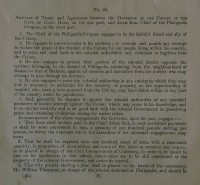
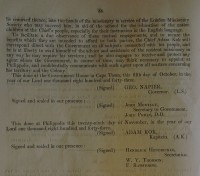
1843 Treaty with Sir George Napier allowing Boers to lease Griqua lands
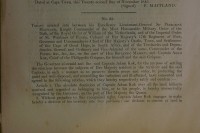
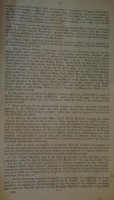
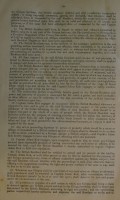
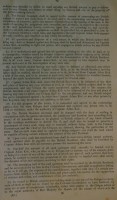
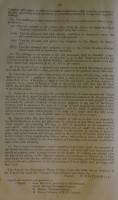

1845 (Second) Treaty with Sir George Napier allowing Boers to purchase Griqua lands
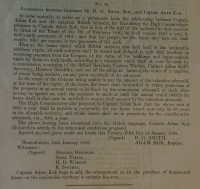
1848 Treaty with Sir Harry Smith handing lands over to the Boers
Critical comment on this work:Foundation work - transcript of dozens of treaties between the British Government and various native tribes including the Griqua |
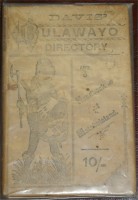
This original 220 page hard covered book is in surprisingly good condition for its age. The inside the pages & cover are beginning to separate through age and use. Otherwise it is without damage, stain etc and is protected by a home made plastic cover. Importantly this book was once the property of Aston Redrup - more below. The book's popularity is reflected by its facsimile reproduction in 1981 - a few copies of this reproduction can be found on the Internet.
 The original Bulawayo
(place of bloodshed), King Lobengula's royal kraal, which stood on the site
of State House, was occupied by the British South Africa Company on 4 November
1893. During the opening months of 1894, Patrick Fletcher laid out a new
Bulawayo on its present site, and, by March, the first building stands were
being offered for sale. Bulawayo was declared a town on 1 June 1894.
The original Bulawayo
(place of bloodshed), King Lobengula's royal kraal, which stood on the site
of State House, was occupied by the British South Africa Company on 4 November
1893. During the opening months of 1894, Patrick Fletcher laid out a new
Bulawayo on its present site, and, by March, the first building stands were
being offered for sale. Bulawayo was declared a town on 1 June 1894.
Bulawayo's growth from that time can only be described as remarkable as all the building materials had to be brought several hundred miles by ox-wagon. By the end of 1895, development was sufficiently advanced to justify the production of a directory, and early 1896 saw the publication of The Directory of Bulawayo and Handbook of Matabeleland by Alexander Davis, of which this is an original.
Image right: the only photograph in the book - Grand
Hotel, Cape Town
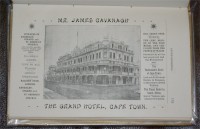
It was the first directory to be issued in Rhodesia and as such is a collector's item. Very, very few of the original books remain. Alexander Davis was also founder and editor of The Bulawayo Sketch, the first illustrated newspaper to be published in the country. His wife ran the Oxford Restaurant at 391 Rhodes street. The scene is set in a number of feature articles which include the excellent first-hand picture, 'Lobengula and His Times' by James Dawson, a trader who was at Bulawayo before the occupation.
Of great interest to Bulawayans is the 'History of Bulawayo', a diary-of-events presentation of most fascinating information; and the invaluable list of names of Stand Owners and Occupiers. The book was reproduced in 1981 by Books of Zimbabwe.
Charm and character are imparted to the work by the informative advertisements, which exude the enterprise and enthusiasm of the pioneering period.
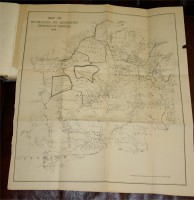 |
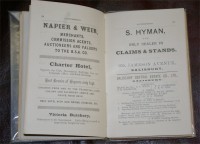 |
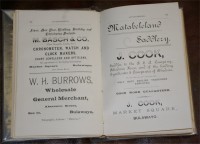 |
The Map of Matabeleland |
Advertisers pages |
in the book |
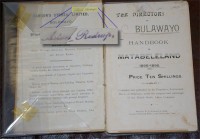 Aston Redrup
Aston Redrup
This book was originally the property of Aston Redrup (see image right). Redrup was an extraordinary aviator who in 1933 manufactured a curious "pou de ciel" or Flying Flea which was powered by a 540cc two stroke motor cycle engine. The plane is today in Zimbabwe's National Military Museum in Gweru.
Aston Redrup was one of the brains behind the establishment in 1927 of the Rhodesia and Nyasaland Airways. The Bulawayo Chronicle announced on the 9th August: "Bulawayo Flying Scheme - Commercial Aviation Should Be Established in a Few Days. The Rhodesian Aviation Syndicate has been formed, chiefly financed by Mr. Harry L. Stewart, Filabusi mine-owner and rancher. Other members are Mr. A. G. Hay, Capt. J. D. Mail and Mr. A. S. Redrup (Secretary); Mr. John Coghlan is acting in a legal capacity. The three-seater aeroplane was the property of Captain Mail."
Redrup was a director of the Rhodesian Aviation Company which evolved later in 1929.
See also the Bechuanaland Border Police
This rare original first edition hard copy of the directory bearing Redrup's
name is held by the Balson Holdings Family Trust.
Critical comment on this work:An extremely rare and sought after work which is the first ever directory of the region now known as Zimbabwe |
 This series of nine
books (the last book is a comprehensive cross reference) in original brown
cloth, with gilt titles by Theal . Theal, a historian, is recognised as the
authority on early South African history and is often referred to by authors
in research based historical books that followed. This first edition set
was originally presented to the Wodehouse Public Library in Dordrecht by
the Cape Colonial secretary in April 1899. The books display white accession
numbers on spines, library-stamps & accession numbers on end-papers,
title-pages & odd other pages, covers slightly scarred & marked,
some minor fish-moth damage to a few page margins.
This series of nine
books (the last book is a comprehensive cross reference) in original brown
cloth, with gilt titles by Theal . Theal, a historian, is recognised as the
authority on early South African history and is often referred to by authors
in research based historical books that followed. This first edition set
was originally presented to the Wodehouse Public Library in Dordrecht by
the Cape Colonial secretary in April 1899. The books display white accession
numbers on spines, library-stamps & accession numbers on end-papers,
title-pages & odd other pages, covers slightly scarred & marked,
some minor fish-moth damage to a few page margins.
The first edition of these books is extremely rare and the set is conservatively valued at over US$1,000.
The books are a detailed archival source on early records of exploration of the east coast of Africa, mainly by the Portuguese & British and including shipwrecks. The books were published over a number of years from 1898 to 1903 - the historical material ends in 1875. This set was acquired from ABC Books in Hilton, Natal.
This rare original complete series of nine books in excellent condition
is held by the Balson Holdings Family Trust.
Critical comment on this work:An invaluable and classical resource used as a major source of reference by historians over the last 100 years. |
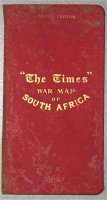 The Times war map of South Africa (Fourth Edition) -
The Times (c1900)
The Times war map of South Africa (Fourth Edition) -
The Times (c1900)
It is hard to get a copy of this linen map in good condition.
This large fold out linen leaf (about 100cm deep by 70 cm wide) includes separate maps of the major areas of conflict in Natal, Orange Free State, Witwatersrand, Mafeking District, Cape Colony and the Transvaal showing the geographic borders of the Boer and British territories as at 1891.
The map is one of the first to refer to the village of "Umzimkulu" together with "Clydesdale" - the Strachan's farm on the banks of the Umzimkulu River at the drift.
More maps from the book can be seen at this link.
The Balson Holdings Family Trust holds a copy in very good condition.
Critical comment on this work:A book that only the serious Griqua researcher or researcher of the Transkei and Ciskei will find of any real interest. |
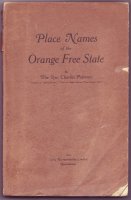 Place names of the Orange Free State (First Edition) -
1922
Place names of the Orange Free State (First Edition) -
1922
 Published in Queenstown,
Cape Province, S. Africa: Daily Representative Ltd. Octavo, bound in stiff
paper wraps. 54pp including index.
Published in Queenstown,
Cape Province, S. Africa: Daily Representative Ltd. Octavo, bound in stiff
paper wraps. 54pp including index.
Very rare early work, and with much content difficult to find elsewhere. Not listed for sale on the Internet.
Scholarly but very readable study of the origins of place names in South Africa (land, landforms, rivers, settlements, etc). Bushman (Korannas, Griquas), Bantu, Hottentot, Basut, Kaffir,Voortrekker, Sesuto, historical, dignitary, Scriptural, etc. Of interest to linguists and regional historians. Many references to historical, linguistic, and cultural studies embedded in text. At the time, the author was the foremost expert in the world on the etymology of South African place names. It is interesting that Pettman completes dismisses the important historial role of the Griqua as the first settlers of this region (they preceded the Boers by years).
This book cannot be found for sale on the Internet.
The Balson Holdings Family Trust holds a copy in very good condition with some chipping to wraps (introduction below).
Critical comment on this work:A book that gives great insight into the origins of the early place names of the OFS. |
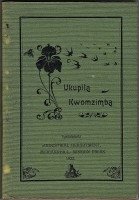 Ukupila - Kwomzimba-
1922
Ukupila - Kwomzimba-
1922
 Published by Mariannhill Mission Press, Pinetown - about 150 pages. Written in Zulu.
Published by Mariannhill Mission Press, Pinetown - about 150 pages. Written in Zulu.
Part of our growing collection of early works printed by this extraordinary mission which had an early presence in East Griqualand.
Extremely rare book, with content impossible to find elsewhere. Not listed for sale on the Internet.
First edition. 12mo. Cloth. Pp. (i),v,(ii),137,vi,ii. A basic work on health, hygiene, medication, etc. in Zulu. Cover slightly marked, front hinge splitting, paper browned. Good.
This book cannot be found for sale on the Internet.
The Balson Holdings Family Trust holds an original copy in good condition.
Critical comment on this work:Valuable resource for any academic interested in early South African indigenous medicine and health. |
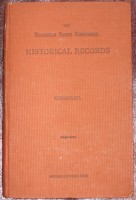 The Transkeian Native Territories - Historical Records
The Transkeian Native Territories - Historical RecordsThis book, freely available on the Internet, was written by the son of Chas Brownlee author of Reminiscences of Kafir Life and History Chas was in charge of Native Affairs in East Griqualand in the 1880s whereas Frank was the Magistrate at Mount Ayliff.
Of particular interest is his comments and views on the "uprising" by AAS le Fleur in the late 1800s.
The book is largely a historical account of the early native tribes under leaders like Faku, Jojo and their turbulent relationship with the Pondomisi on the east coast. This account goes right back to the times of the plundering Shaka. It also looks at the deadly rinderpest outbreak which devastated livestock and the annexation of Pondoland in the late 1800s.
The Balson Holdings Family Trust holds a copy in very good condition.
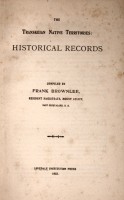 |
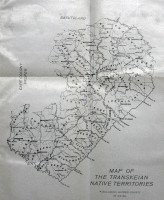 |
The frontispiece |
Map of East Griqualand |
Critical comment on this work:An interesting book which covers a range of issues in East Griqualand at the turn of the 19th Century. |
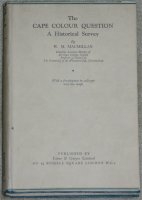 The Cape Colour Question - A historical Survey
The Cape Colour Question - A historical SurveyPublisher: London, Faber & Gwyer [1927] Description: Africa; apartheid; 1st ed.; xvi, 304p. incl. index; 22.4cm; green cloth. A fine copy in a near fine scarce in this choice state with jacket in perfect condition.
The book has 2 folded maps; frontispiece portrait of Dr. John Philip 1775-1851, South African missionary for London Missionary Society from 1819 until death
MacMillan was the Professor of History at the University of Witwatersrand in Johannesburg.
The Balson Holdings Family Trust holds a copy in excellent condition.
Critical comment on this work:A book that looks at the motives behind Dr Philips confrontation with the Colonial Government over the "colour question" in the 1820s. Heavy reading. |

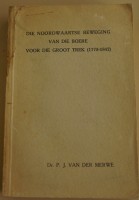 Die noordwaartse beweging van die Boere voor die Groot Trek (1770-1842)
Die noordwaartse beweging van die Boere voor die Groot Trek (1770-1842)Die noordwaartse beweging van die Boere voor die Groot Trek (1770-1842) by Dr. P.J. Van der Merwe. Published by Den Haag, W.P. Van Stockum & Zoon, 1937.
This book written in Afrikaans is the extremely rare first and only edition. This bound thesis cannot be found for sale on the Internet. The soft covered book has four hundred pages, several tables, maps (1 folding) - see images below. First publication of this doctoral thesis forming part of a trilogy of works by the author on the migration of Boers in the Cape Colony in the 18th & 19th centuries. This volume deals largely with contact between the Boers and the Bushmen & Griquas. Covers a bit stained, some corners creased, book-plate and signature on end-paper, light foxing.
The book, clearly, gives the case that the land the Griqua called their own around Philippolis was stolen from the bushmen. This aberration of the real facts is then used to lever the justification of the Afrikaner state - the Orange Free State.
Heavy going but fascinating reading.
The Balson Holdings Family Trust holds a copy in good condition.
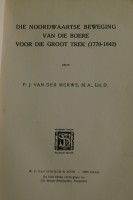 |
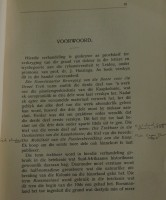 |
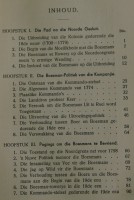 |
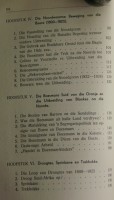 |
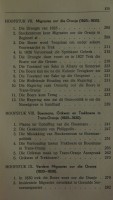 |
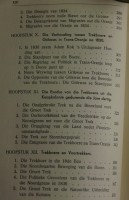 |
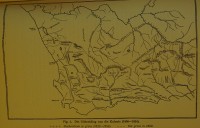 |
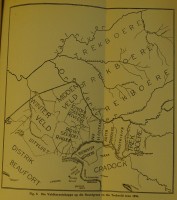 |
Critical comment on this work:The Afrikaaner's view on why they stole the Orange Free State from the Griqua. |
 Die Wordings en Verwordings Geskiedenis van die Koranna
Die Wordings en Verwordings Geskiedenis van die KorannaAfrikaans book discussing the history of the Koranna who interacted with the Griqua at Griquatown. The Koranna are sadly no longer a South African tribe.
Soft covered A5 sized book - 20 pages.
Extremely rare and signed by the author
Heavy going but fascinating reading.
The Balson Holdings Family Trust holds a copy in excellent condition.
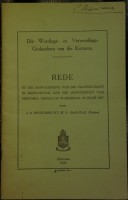
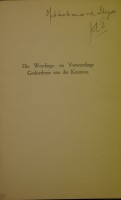
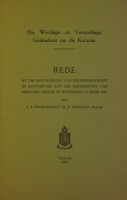 |
Critical comment on this work:A suscinct but somewhat shallow perspective on the Koranna. |
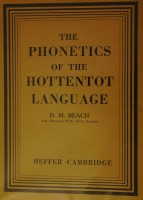 The Phonetics of the Hottentot Language
The Phonetics of the Hottentot LanguagePublisher: Heffer Cambridge [1938]
Oyal 8 volume - Original cloth with dusk jacket (slightly age-toned)
Hard cover 330 pages - has 12 full page plates and numerous diagrams.
The book includes several detailed graphs of Tonetic Transcriptions by Hottentots.
Importantly it includes a chapter on the Korana (Hottentot) in which the cultural overlap in language with the Griqua and the people is clearly demonstrated. (See images below).
This is a rare first edition copy in excellent condition.
The Balson Holdings Family Trust holds a copy in excellent condition.
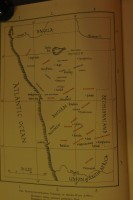 |
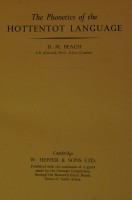 |
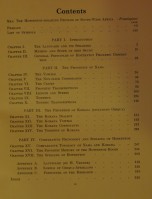 |
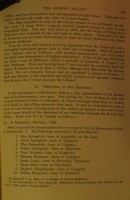 |
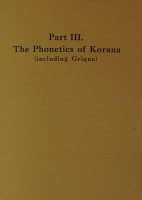 |
 |
Critical comment on this work:Very heavy reading. |
 Short history of the Volunteer Regiments of Natal and East
Griqualand
Short history of the Volunteer Regiments of Natal and East
Griqualand

This rare, 170 page hard covered book provides the
history of a number of obscure but interesting volunteer regiments in Natal and
East Griqualand - dating back to the early 1800s.
Among the regiments
listed is Royston's Horse with the comment "Compiled from the records and
other data furnished by the late Brigadier-General J R Royston CMG, DSO who
commanded the regiment." It was Royston who minted the unique St Faith's
6d held by the Balson Holdings Family
Trust
.
You can see below scans of pages covering volunteer
regiments set up in East Griqualand. These include Ixopo (southern Natal);
Umzinkhulu and Matatiele.
Interestingly no reference is made of Donald Strachan's
famous
abandolosi native volunteer army
that kept the peace in East Griqualand
in the 1800s. Reference is made to the Ixopo Mounted Rifles (1868-1880) and
their apparent role in "watching the unfriendly and unruly attitude and
activities of the Griquas in Griqualand across the river". While Strachan's abalandalosi (based in Umzimkhulu) did help gquell
the 1878 Griqua rebellion the Ixopo Mounted Rifles do not bare a mention in this
conflict.
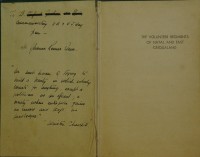 |
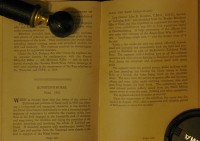 |
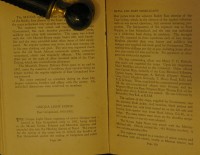 |
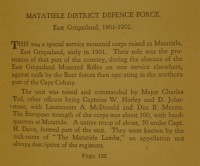 |
|
Inscribed front cover |
Royston's Horse |
Griqua Light Horse |
Matatiele District |
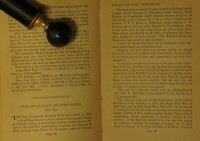 |
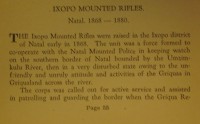 |
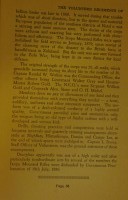 |
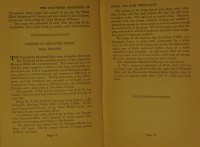 |
|
East Griqualand Mounted Rifles |
Ixopo Mounted Rifiles - no |
ref to Strachan's abalanadalosi |
Umzimkhulu Mounted Rifles |
The Balson Holdings Family Trust holds a copy in excellent condition.
Critical comment on this work:A rare book providing excelling insight into the role of volunteer regiments in the early days of colonised South Africa. |
 The Orange River Sovereignty (1848-1854) -
The Orange River Sovereignty (1848-1854) -

This extremely rare hard covered 600 page book carries masses of useful information covering the critical time that the Griqua were evicted from their own lands in the Orange Free State region.
From the menus in the scans of pages below you can see the involvement of the Griqua in this study.
The Balson Holdings Family Trust holds a copy in excellent condition.
Critical comment on this work:A book that only the serious Griqua researcher will find of interest. |
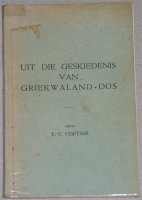 Uit die geskiedenis van Griekwaland-Oos - E
C Coetser (1949)
Uit die geskiedenis van Griekwaland-Oos - E
C Coetser (1949)

This extremely rare, 108 page soft covered self-published book is written in Afrikaans. One copy is inscribed by Judge Tom Mullins when he presented it to Scott Balson at the time of his visit to Port Elizabeth on the 15th September 2006. The other was acquired over the Internet after years of searching.
The book gives a detailed history of the early times and characters of the region including Smith Pommer and Adam Kok III. It also looks at the early days behind growing communities in districts like Matatiele.
Coetser notes on page 48: "In 1870 was geld hier baie skaars, toe is vee, graan en timmerhout verruil vir klerasie en eetware." In 1870 money was very scarce in East Griqualand, as were animals, grain and timber were exchanged for eating utensils and other items".
The Balson Holdings Family Trust holds two copies one in excellent condition and the other, signed by Mullins, very good condition (binging slightly loose).
Critical comment on this work:A book that only the serious Griqua researcher will find of interest. |
 The Khoisan Peoples of South Africa
The Khoisan Peoples of South AfricaThis 445 page hard covered book has 16 black and white photographic plates. (Some scanned below).
An excellent reference book covering the various Khoisan tribes of South Africa and their history.
In the fold out map scanned below you can see the location of the various Khoisan tribes.
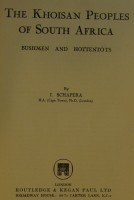 |
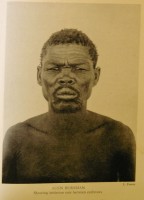 |
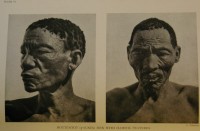 |
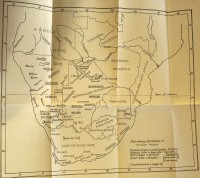 |
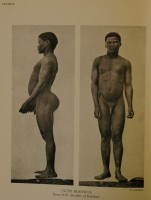 |
|
Frontispiece |
Khoisan |
Khoisan |
Map showing spread of tribes |
Khoisan |
The Balson Holdings Family Trust holds a copy in very good condition (binding slightly loose).
Critical comment on this work:A well researched book looking into the Khoisan people across South Africa. |
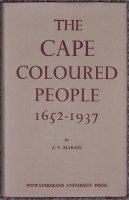 The
Cape Coloured People 1652 - 1937
The
Cape Coloured People 1652 - 1937J S Marais was the Professor of History at the University of the Witwatersrand.
This book, printed by the Witwatersrand University Press at the height of the Apartheid era in South Africa, is an interesting study in racial relations between Europeans and non-Europeans in South Africa.
The highly referenced book looks at the impact that the Europeans had on the Griquas - in their culture, lifestyle and history.
The book makes no reference to any coinage being used at Griqua Town. Marais refers at length to Campbell's book in which the missionary refers to the same meeting where the Bastards adopted the name "Griqua". It is clear that Marais discounted the theory that coins had ever circulated at Griquatown. (Chapter II pgs 32-73)
Marais notes that the influence of the London Missionary Society resident Griqua Town missionary, W Anderson, declined in 1814 and that there was no leader in the small settlement - Adam Kok II and Barends, the leading families, leaving to set up home at Campbell and Daniel's Kuil. He states that during this time 1815-1820 Griquatown became a ghost town with the few nomadic Griquas using the station as a temporary camp before moving on.
This book is held by the Balson Holdings Family Trust.
Critical comment on this work:Heavy going... but, nevertheless, interesting and valuable. |
Wortschatz Der Khoi-Khoin (Namaqua-Hottentotten)
J G Kroenlein (1971 reprint)

![]()
A facsimile of the fabulously rare Hottentot - German hard copy dictionary originally printed in 1889. The 350 page book translates the language of the Hottentots in Namaqualand (German South West Africa) into German.
This facsimile is extremely rare with photocopies of the book being
sold for about US$60 - for example: An early Namaqua/German dictionary,
almost unobtainable in the original. 350 pp A photocopy of this sought-after
work, neatly bound in somewhat worn cloth-covered boards. Obviously a working
copy, seal of F B Lorch inside covers.
(Comment by Africana Books in Cape Town)
The Balson Holdings Family Trust holds a copy in excellent condition.
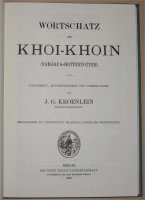 |
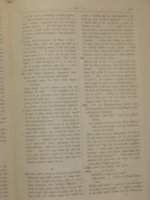 |
Critical comment on this work:Investment purposes only |
 Beyond the Cape
Frontier - C Saunders and R Derricourt (1974)
Beyond the Cape
Frontier - C Saunders and R Derricourt (1974)
This book, easily obtainable through the Internet, looks at the history of the Transkei (formerly East Griqualand).
The book reflects a collection of academic papers prepared for a conference on the history f the Transkei and Ciskei which was held in Grahamstown in February 1973.
The book comes with maps and anecdotes... amongst the academic repose. Makes for interesting reading!
The Balson Holdings Family Trust holds a copy in excellent condition.
Critical comment on this work:A book that only the serious Griqua researcher or researcher of the Transkei and Ciskei will find of any real interest. |

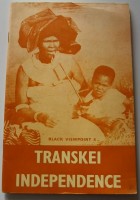 Transkei Independence, Black Viewpoint Various black authors (1976)
Transkei Independence, Black Viewpoint Various black authors (1976)
This very rare 46 page soft covered booklet cannot be found for sale on the Internet. When one reads some of the extraordinary and racist aspects of the homeland's consitution you can see why the (coloured) Griqua who resided at Kokstad were so threatened by this policy (Foreword pg 3):
In terms of the constitution, Transkeian citizenship would be open to Africans only, excluding the Coloureds and Whites living permanently in the territory.
The book carries articles by several African authors who talk about "white power" and how the Africans have been subterfuged by the whites. There is a complete absence of discussion over the Griqua who once held a large part of this land as their own sovereign nation.
The sanitisation of the Griqua sovereignty and land ownership is completely omitted from the "Historical Perspective" heading (pg 12) which conveniently starts from 1910 - some fifty years after the Griqua first started occupying Griqualand East.
On page 13 the book states: The Transkei evolved into a multi-ethnic region in which there were Pondos, Tembus, Fingos, Xhosas, Sothos, Bacas, Xesibes, Bomvanas, Pondomises, Zulus fleeing the mighty Zulu armies, Hlubis and Ntlangwinis." Not one reference to the Griqua people at all in the contrived and inaccurate history.
The hypocrisy of modern South Africa continues under black rule and is epitomised by recent attempts by the Pondo (African) councillors at Kokstad to get the town renamed to a name better suiting their own tribe regardless of history. Renaming issue (February 2010) - source the newspaper "The Kokstad Advertiser".
A difficult book to find today.
The Balson Holdings Family Trust has a copy in excellent condition,
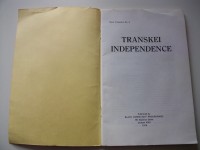
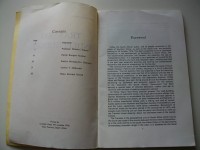
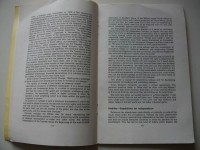
Critical comment on this work:To be reviewed |
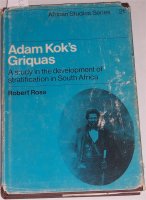 Adam Kok's Griquas - Robert Ross (1976)
Adam Kok's Griquas - Robert Ross (1976)
This 190 page book is described as being "A study in the development of stratification in South Africa".
It is a highly technical book with dozens of references covering the lives of the Griquas at Philippolis and Kokstad.
The book covers the period leading up to the annexure of East Griqualand by the British Governor of the Cape in 1879.
A difficult book to find today.
The Balson Holdings Family Trust has a copy in excellent condition,
Critical comment on this work:Unlike Shephard or Harber's books this is a very hard book to read. Highly technical - and aimed at the serious researcher. |
 Slaves and Free Blacks at the Cape 1658-1700
Slaves and Free Blacks at the Cape 1658-1700 This 208 page hard copy book is in excellent condition and comes with original jacket.
It is a highly technical book that traces the origins of the slaves who were first brought to the Cape in 1658
Some f the stories about the punishment meted out to slaves are quite compelling and terrible like the young woman with a baby who was wrongly convicted of murdering her child and sewn into a bag then thrown into Table Bay as punishment.
The Balson Holdings Family Trust has a copy in excellent condition.
Critical comment on this work:Highly technical - and aimed at the serious researcher. |
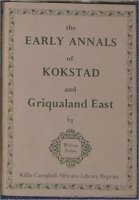 The Early Annals of Kokstad and East Griqualand -
reprint of Rev W Dower's book
The Early Annals of Kokstad and East Griqualand -
reprint of Rev W Dower's book The Killie Campbell Library, who have a special collection of documents from Griqualand - and especially the Strachan family, have added copious and relevant notes to the reprint of Dower's book.
These notes include copies of letters that appeared in local newspapers following its release - many issues and differing points are presented. The book refers to the Griqua Pond bank note being impounded by Donald Strachan, the Magistrate at Umzimkulu. There was much anger displayed by the Griquas over how they were presented by Dower.
The Balson Holdings Family Trust holds two copies of the reprint which are used for research purposes. A text file of the book can be downloaded at this link .
The reprint, seen right, can still be purchased through the Internet today.
More on the facsimile of the Griqua pond
bank note carried in this book can be found at this link
Critical comment on this work:An excellent and comprehensive work by accomplished librarians at the University of Natal (Durban). The work is a must for any serious collector of Griqua coins and trade tokens. It gives a very clear insight into how the people lived at Nomansland. |
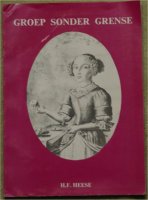 Groep Sonder Grense - H
F Heese (1984)
Groep Sonder Grense - H
F Heese (1984)
 This 88 page soft
covered book was banned under the Apartheid regime because it clearly
demonstrated the infiltration of "coloured" blood into the mainstream Afrikaner
population.
This 88 page soft
covered book was banned under the Apartheid regime because it clearly
demonstrated the infiltration of "coloured" blood into the mainstream Afrikaner
population.
The book project, funded by the Institute of Historical Review, was slammed and closed down by the National Party at the height of the separation of black and white and when the homeland policy had been put in place.
Very few copies of the original books exist - books which use genealogical proof to demonstrate that most Afrikaners are in fact coloured. The second edition, recently published by Protea Bookhuis in 2005, can be bought on the Internet today.
Another book which faced a similar fate can be seen at this link.
When the original claim was made that Afrikaners had a small percentage of non-white ancestory, it caused a major polemic (some even wanted to take H.F. Heese to court). Research by J.A. Heese who studied the genealogical composition of the Afrikaner looking at the period 1657 - 1867 concluded that the Afrikaner ancestry was Dutch 34.8%, German 33.7%, French 13.2%, Non White 6.9%, British 5.2%, Other European nations 2.7%, Unknown 3.5%. GFC de Bruyn used a different form of calculation and his results were: Dutch 34.1%, German 29.2%, French 24.7%, British 0.3%, Other European nations 2.4%, Non European 5.4%, Unknown 3.9% (refer to J.S. Bergh ed., Herdenkingsjaar 1988, RTJ Lombard "Die bydrae van die Franse Hugenote tot Suid-Afrika se bevolkingsamestelling").
The Balson Holdings Family Trust has a copy in excellent condition.
More on Hans Heese can be seen at this link
Critical comment on this work:Interesting book but highly controversial because of its content |
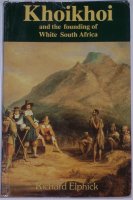 Khoikhoi
and the founding of White South Africa
Khoikhoi
and the founding of White South AfricaThis book examines the decline of the Khoikhoi (Hottentots) following the settlement of the Cape by van Riebeeck in 1652
It looks at the pre-colonial society of the Khoikhoi (men of men) and why the Dutch settlement spelt their doom.
Elphick was the Professor of History at Wesleyan University, Yale.
The Balson Holdings Family Trust has a copy in excellent condition.
Critical comment on this work:Interesting book on the fall of the Khoikhoi as a nation |
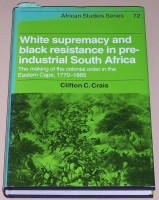 White Supremacy and Black Resistance in pre-Industrial South
Africa
White Supremacy and Black Resistance in pre-Industrial South
AfricaThis book, published under the African Studies Series (72), gives an excellent background to the transformation and factors which led to the formation of the Griqua nation.
The book centres on the exploration of the past of the Eastern Cape a region of decisive importance in South African history. The book looks at the interaction of the white settlers on the local population and how the new arrivals displaced the original inhabitants.
The Balson Holdings Family Trust has a copy in excellent condition.
Critical comment on this work:Well written, but research based work making this a book for the hardened student in Griqua history. |
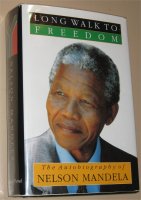 Long Walk to Freedom
Long Walk to Freedom With “First Published by Macdonald Purnell in 1994” and no additional printings on copyright page, preceding all other publications of this work, this is it, an extremely rare first printing of the true First Edition of “Long Walk to Freedom“ by Nelson Mandela with a 5 X 7 glossy photograph laid in at title page of Nelson Mandela which is by him.
The book is in excellent condition, clean in and out, no names etc on interior and a couple of faint tiny spots to front board, as is the price-intact brodarted dust wrapper – no chips, no tears etc. The signed photograph is likewise in excellent condition.
The book covers Mandela's amazing history.
The Balson Holdings Family Trust holds this sought after first edition copy.
Critical comment on this work:Well written autobiographical work covering the life of Nelson Mandela - the famous S African leader with Griqua roots. |

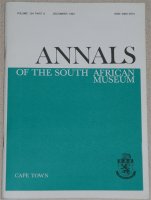
Death in Pella: Mortuary
rituals in a Namaqualand Reserve
(Annals of the S African Museum) by Gerald Klinghardt, December 1994
This extraordinary work covers the manner in which the people of Namaqualand - a region closely associated with the Griquas in the 17th and 18th Centuries - handled death in their community. It is highly technical but a great reference for researchers.
It was in the Namaqualand region that the scoundrel Jager Afrikaner raged against society's norms.
Klinghardt is a professor and curator of Social History at the S African Museum (Iziko) in Cape Town.
The book is about 150 pages long.
Scott Balson met with Gerald Klinghardt in September 2006 - seen presenting Gerald, on behalf of the S A Museum, with a copy of "Children of the mist".
The Balson Holdings Family Trust has a copy in excellent condition, signed
by Gerald Klinghardt at the time of Scott Balson's meeting with him in September
2006.
Critical comment on this work:Prof Gerald Klinghardt has studied several of the early tribes of South Africa and written extensively on them - an excellent and useful research. |
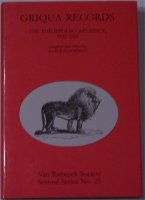 Griqua Records - The Philippolis
Captaincy - Karel Schoeman (1996)
Griqua Records - The Philippolis
Captaincy - Karel Schoeman (1996)
This highly technical book carries hundreds of extracts from documents in Dutch and English - with descriptions and threads leading through to create a story line. Schoeman was a volunteer for the Van Riebeeck Society.
Not a book for the faint hearted!.
It is an extremely hard book to come by despite being published in 1996 by the Van Riebeeck Society (Second Series No 25).
The Balson Holdings Family Trust has a copy in excellent condition.
Critical comment on this work:A useful handbook for serious researchers looking into the early days of the Orange Free State. |
 The Mission Station at Griquatown 1801-1821 - Karel Schoeman
(1997)
The Mission Station at Griquatown 1801-1821 - Karel Schoeman
(1997)
This highly technical book carries extracts from a number of missionaries and explorers like Campbell, Moffat and Burchell. It also carries extracts from original key London Missionary Society documents sighted by Schoeman during his research.
Not a book for the faint hearted! In this book Schoeman unlocks the fallacy of the Griquatown coins as circulating currency - relevant extracts at this link.
It is an extremely hard book to come by despite being published in 1997 by the Griquatown Tourism Commission.
The Balson Holdings Family Trust has a copy in excellent condition.
Critical comment on this work:A useful handbook for serious researchers looking into the earliest day of Hardcastle/Griquatown. |
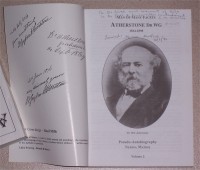
 Dr
Atherstone - Man of many facets - Nerina Mathie (1998)
Dr
Atherstone - Man of many facets - Nerina Mathie (1998)
A three volume set privately published by his family in Grahamstown.
The set of three books is extraordinarily rare (especially volume two).
Atherstone was one of the most celebrated and well known medical men in South Africa. He had an international reputation not only in the field of medicine, but also in the other sciences. When only 21 years old, he was Staff Medical Officer in the Sixth Frontier War under Col. (later Sir) Harry Smith during which time he would have met the Griquas and taken possession of the powder horn now held in the Balson Holdings Family Trust collection.
He was also responsible for identifying the first diamond ever found in South Africa - causing the mass migration to the diamond fields around Kimberley.
The Balson Holdings Family Trust has a copy of the three volumes in excellent condition all signed by Nerina Mathie on the date of the launch.
Critical comment on this work:An excellent research work on a man who had a major impact in early South African history. |
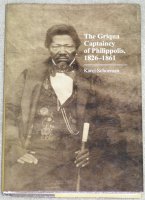 The
Griqua Captaincy of Philippolis, 1826 - 1861 (2002)
The
Griqua Captaincy of Philippolis, 1826 - 1861 (2002)The 300 page hard covered book describes the arrival, settlement, fragmentation and loss of the territory north of the Orange river
A highly technical work but a very useful reference to the serious researcher..
The Balson Holdings Family Trust has a copy in excellent condition
.
Critical comment on this work:Excellent book on a most misunderstood aspect of Griqua history |
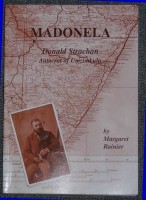 Madonela: Donald Strachan autocrat of Umzimkulu
(2003)
Madonela: Donald Strachan autocrat of Umzimkulu
(2003)MADONELA is much more than a biography of Donald Strachan but is a carefully researched and grippingly written account of the history of Nomansland - that area of East Griqualand and southern Natal still causing such political uncertainties. Donald Strachan's remarkable career as a pioneer in the north-eastern Transkei involved him directly in most major events there during the second half of the nineteenth century.
The book clearly details the amazing influence that Donald Strachan had in Nomansland - the reason his trading store coins were widely accepted across this region.
Only 300 copies of this sought after book were published.
The Balson Holdings Family Trust has a copy in excellent condition signed
by John Rainier, Margaret Rainier's son who completed
the book and published it after his mother's untimely death.
Critical comment on this work:This limited edition work is for the Griqua enthusiast only. It is very detailed and analytical looking at the life and times of Donald Strachan with hundreds of references. It took Margaret Rainier over 30 years to complete theis excellent book which was finally published by her son, John Rainier, after her untimely death. |

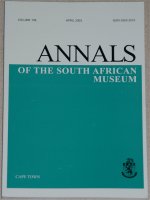
This extraordinary work covering the people of Namaqualand - a region closely associated with the Griquas in the 17th and 18th Centuries is highly technical but a great reference for researchers.
Klinghardt is a professor and curator of Social History at the S African Museum (Iziko) in Cape Town.
The book is about 150 pages long and covers all aspects of the people's lives - including their association with the "Bastards" - the Griqua people before 1813.
Scott Balson met with Gerald Klinghardt in September 2006 - seen presenting Gerald, on behalf of the S A Museum, with a copy of "Children of the mist".
The Balson Holdings Family Trust has a copy in excellent condition, signed
by Gerald Klinghardt at the time of Scott Balson's meeting with him in September
2006.
Critical comment on this work:Prof Gerald Klinghardt has studied several of the early tribes of South Africa and written extensively on them - an excellent and useful research. |

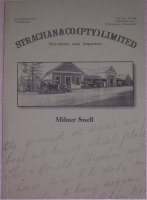
This 100 page A4 sized book was written by the Trustee of the Kokstad Museum , Milner Snell, in 2005. It was a private issue and just 30 copies were bound.
Milner has done his homework well and his great friendship with the late Ken Strachan served him in good stead when it came to researching this excellent work. The book has chapters on the founders of the business, Thomas and Donald Strachan; the partnership with Brisley under Strachan and Co in 1874; the family business carried on in 1887 after Brisley sold out; Growth and Change under Donald Strachan's son, Douglas, from 1915 to 1945; Success under "Dono" Strachan 1945-1976 and; the end of an era under the Ken Strachan 1976 - 1984. It also carries fascinating appendices with information about the company's Managing Directors, the buildings at Umzimkulu and the various stores in the group.
Two pages of the book are dedicated to the trade tokens of Strachan and Co.
Only 30 copies of this sought after book were published - it is no longer available.
See also Milner Snell's excellent book on James Cole another trader in this region.
The Balson Holdings Family Trust has two copies in excellent condition,
both signed by Milner Snell, one with a personal message.
Critical comment on this work:This limited edition work is for the Strachan and Co enthusiast only. It is very detailed and analytical work about the rise of this great trading store business and has hundreds of references. A must have for any serious collector of S Africa's first circulating currency, the trade tokens of Strachan and Co. |

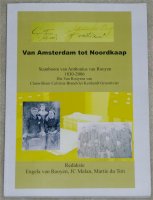
This very specialised 125 page soft covered book carries numerous images and statistics in Afrikaans.
Interestingly, it supports the research done earlier by Heese in the banned book "Groep Onder Grense" that a large percentage of the Afrikaner nation does carry Griqua blood.
The Balson Holdings Family Trust has one copy in excellent
condition.
Critical comment on this work:The book gives an interesting insight into the genealogy of the van Rooyens in South Africa |

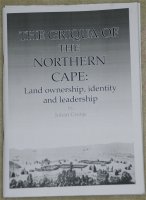
This self published, soft covered, 69 page book reflects a series of interviews undertaken with Griquas.
The book endeavours to prove that the British Government in the Cape "cheated" the Boers of the Orange Free State out of the land ownership of the Big Hole of Kimberley.
The Balson Holdings Family Trust has two copy in excellent condition.
One was signed by Cronje in 2007 when Scott Balson
visited the Sol Plaatje Trust
in Kimberley.
Critical comment on this work:The book gives an interesting insight into the land rights issue and the dramatic impact of the Apartheid policy on the Griqua as a people. |
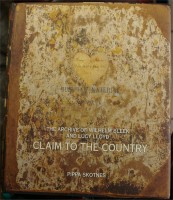 Claim to the Country
Claim to the Country
by Pippa
Skotnes, 2007
This 388 page hardcover book, published by Jacana (South Africa) and Ohio University Press (Athens), carries some fascinating insights into the history of the Bushmen in South Africa.
The book has literally hundreds of images, scans of documents and is beautifully designed (as you can see from the image of the cover right). The DVD that comes in the back of the book has thousands of scans of the diaries of Bleek and Lloyd in which they, among other recordings, translate aspects of the Bushman language.
The book is based on the archives of Wilhelm Bleek and Lucy Lloyd which are stored by the National Library of South Africa, the University of Cape Town and Iziko - South African Museum in Cape Town.
The book includes a brief history of the Bushmen - including their interaction with the London Missionary Society's Kircherer and Anderson (who later joined the Griquas at Griquatown).
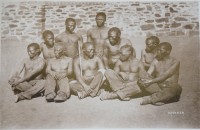 |
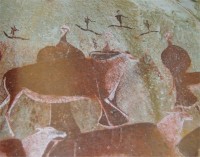 |
|
Imprisoned Bushmen (1870s) |
The remains of the Sak River Mission |
Bushman Painting |
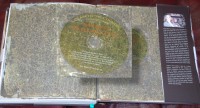 |
||
The DVD at the back of the book |
The Balson Holdings Family Trust has one copy in excellent
condition.
Critical comment on this work:The beautifully designed table book gives a fascinating insight into the San (Bushmen) with many references, images, scans of drawings and paintings, faces, diaries as well as a brief history and a valuable DVD filled with useful resource material. |
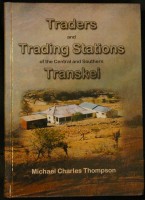 Traders and Trading Stations of the central and southern Transkei
Traders and Trading Stations of the central and southern Transkei
by Michael Charles Thompson, 2009
This 344 page hard covered book covers an enormous part of early East Griqualand (Transkei) history south of the Mzimvubu River. (Watch out for Milner Snell's book covering the trading stores north of this river.)
The book focuses on two key areas - the geography and placement of the trading stores and a fascinating history based around the geneology of the families who ran them.
The book has many historic black and white images and maps (see scans for a sample below).
It also covers the token coins of this region - interestingly the region south of the Mzimvubu has very few traders circulating token coins while the region in which Strachan and Co traded was extremely rich in these coins.
The former Editor of the Daily Despatch (East London) says in the Foreword.. "Anybody with connections to the Transkei - by family ties, friendship or affection - will find many familiar names and places in these pages. Mike Thompson has put together a huge humn map of the Transkei trading stations." This is, of course, referring to the white population of early Transkei.
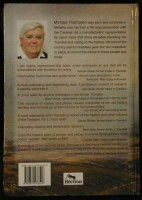 |
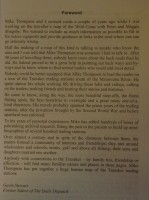 |
|
Back cover of book |
Signed by the author |
The Foreword |
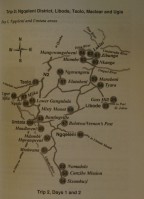 |
||
Interesting maps |
Kreb token coins |
Bushman Painting |
The Balson Holdings Family Trust has two signed copies in excellent
condition.
Critical comment on this work:This well researched book provides an invaluable record of early white settlement in the Transkei. |